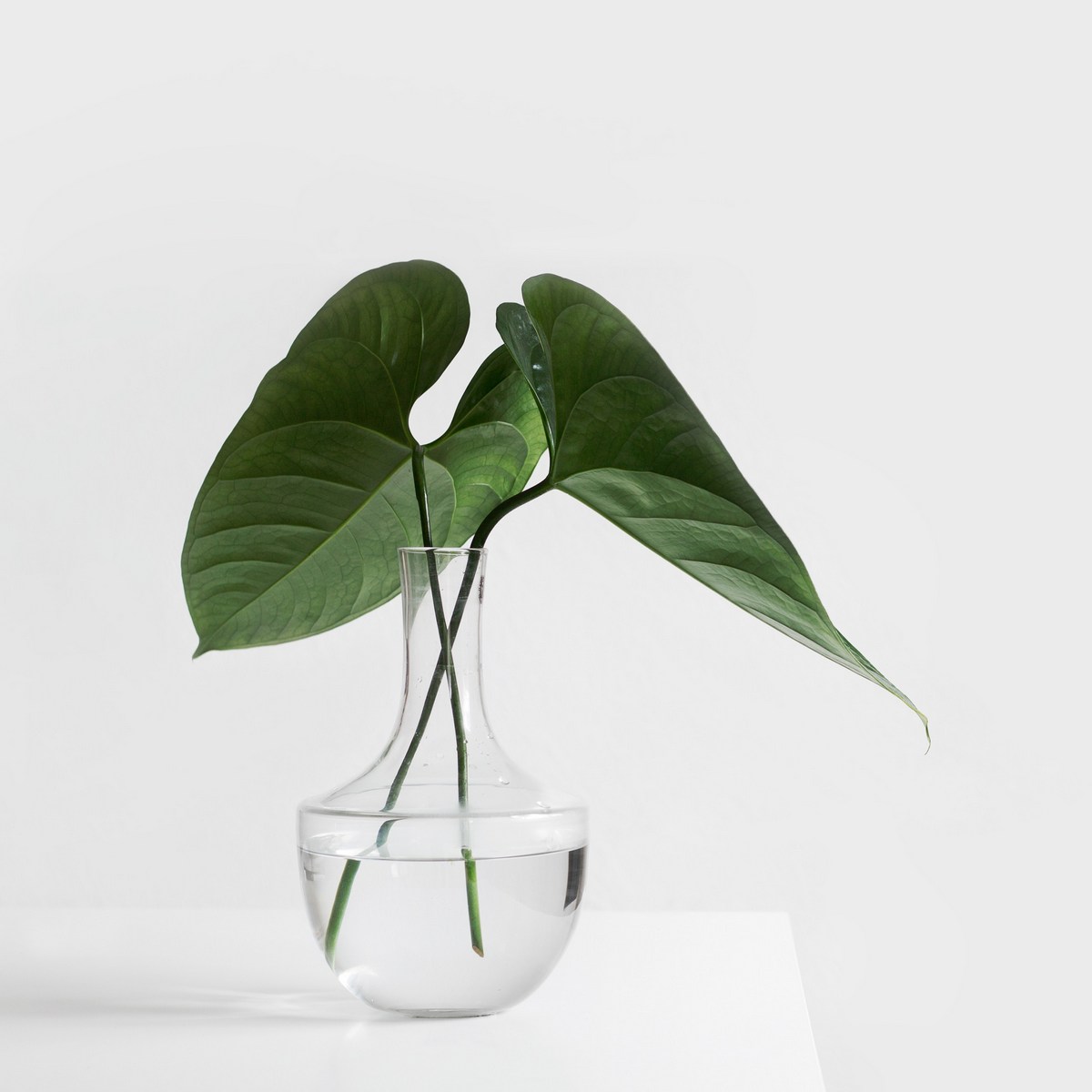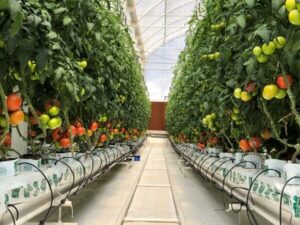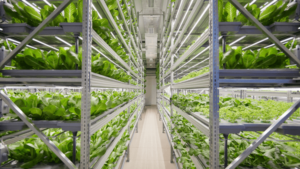Growing plants in the gulf region can be challenging as it is mostly desert, and the climate is dry. A few species of plants have the capability to grow in such a climate. However, those plants are not suitable as a food source. The aim of this work is to design and construct an indoor automatic vertical hydroponic system that does not depend on the outside climate. The designed system is capable to grow common type of crops that can be used as a food source inside homes without the need of large space. The design of the system was made after studying different types of vertical hydroponic systems in terms of price, power consumption and suitability to be built as an indoor automated system. A microcontroller was working as a brain of the system, which communicates with different types of sensors to control all the system parameters and to minimize the human intervention. An open internet of things (IoT) platform was used to store and display the system parameters and graphical interface for remote access. The designed system is capable of maintaining healthy growing parameters for the plants with minimal input from the user. The functionality of the overall system was confirmed by evaluating the response from individual system components and monitoring them in the IoT platform. The system was consuming 120.59 and 230.59 kWh respectively without and with air conditioning control during peak summer, which is equivalent to the system running cost of 13.26 and 25.36 Qatari Riyal (QAR) respectively. This system was circulating around 104 k gallons of nutrient solution monthly however, only 8–10 L water was consumed by the system. This system offers real-time notifications to alert the hydroponic system user when the conditions are not favorable. So, the user can monitor several parameters without using laboratory instruments, which will allow to control the entire system remotely. Moreover, the system also provides a wide range of information, which could be essential for plant researchers and provides a greater understanding of how the key parameters of hydroponic system correlate with plant growth. The proposed platform can be used both for quantitatively optimizing the setup of the indoor farming and for automating some of the most labor-intensive maintenance activities. Moreover, such a monitoring system can also potentially be used for high-level decision making, once enough data will be collected. This work presents significant opportunities for the people who live in the gulf region to produce food as per their requirements.
OUR PROJECTS
Sed ut perspiciatis unde omnis iste natus error sit voluptatem accusantium doloremque.
Morbi sagittis, quis lacinia faucibus, orci ipsum gravida tortor, interdum sapien justo.






